I bought this accordion several years ago and had it tuned and restored by my friend Jerry. It is in remarkable condition overall, with only a few small cosmetic imperfections, with almost all of the original trim still intact, one of the finest examples of its kind I have ever seen. The tone is quite wonderful, with a bass richness and resonance which reminds me of a large pipe organ, and treble registers which sing fluently through those distinctive reeds. The Regina features 4 treble reeds in LMMM configuration, 5 rows of bass reeds in the bass section, the typical 41/ 120 treble key and bass button combination, two changes in the treble voices, a rather petite 16 inch keyboard, and a very strong wooden frame. The color is a unique ivory or antique cream with black decorative accents and lettering. The outer part of the bellows appears to be a gold color, with silver as an inner lining. Jerry painstakingly redid the wax for all the reeds, replaced many of the worn leathers, re-aligned both bass and keyboard sections and added some new gaskets to improve compression. I have never heard another accordion quite like this one, although I have heard similar accordions from the 1930's played by other players or demonstrated via the internet. An enthusiast named Edi has restored and tuned many vintage Hohner accordions and posted a roster of models with accompanying sound samples. Edi's site is named "The Akkordeon-Museum" (www.akkordeon-museum.de). The photography and detailed information on each model is simply spectacular. The audio sound samples give an idea of what some of the early and later Hohner models sound like by hearing each accordion play a specific song.
|
Vintage Hohner Regina VI - a beautiful accordion from 1938
I bought this accordion several years ago and had it tuned and restored by my friend Jerry. It is in remarkable condition overall, with only a few small cosmetic imperfections, with almost all of the original trim still intact, one of the finest examples of its kind I have ever seen. The tone is quite wonderful, with a bass richness and resonance which reminds me of a large pipe organ, and treble registers which sing fluently through those distinctive reeds. The Regina features 4 treble reeds in LMMM configuration, 5 rows of bass reeds in the bass section, the typical 41/ 120 treble key and bass button combination, two changes in the treble voices, a rather petite 16 inch keyboard, and a very strong wooden frame. The color is a unique ivory or antique cream with black decorative accents and lettering. The outer part of the bellows appears to be a gold color, with silver as an inner lining. Jerry painstakingly redid the wax for all the reeds, replaced many of the worn leathers, re-aligned both bass and keyboard sections and added some new gaskets to improve compression. I have never heard another accordion quite like this one, although I have heard similar accordions from the 1930's played by other players or demonstrated via the internet. An enthusiast named Edi has restored and tuned many vintage Hohner accordions and posted a roster of models with accompanying sound samples. Edi's site is named "The Akkordeon-Museum" (www.akkordeon-museum.de). The photography and detailed information on each model is simply spectacular. The audio sound samples give an idea of what some of the early and later Hohner models sound like by hearing each accordion play a specific song.
0 Comments
Visiting the Cathedral of the Holy Trinity at Gibraltar I spent some quiet time admiring the architecture of this very beautiful Cathedral in August of 2001. No one else was there except a few members of the Clergy. As streams of brilliant light poured in through the remarkably shaped windows, my eyes traced the open forms of the arches high above and fell upon the manifold decorative accents located throughout the building. This particular photograph gives another view of the ornate pipe organ just above the entrance to the Cathedral, showcasing some of the magnificent detail and rich hues of the casework and pipes. The colors and shapes are magnified by rows of flags which accent the sides of the main sanctuary. One notices the memorable effects of light and shadow in a space such as this, with the high ceiling providing a natural reflection towards Heaven and an attendant call to prayer.
Visiting the Cathedral of the Holy Trinity at Gibraltar The pipe organ sits above the entrance to the Cathedral and provides a very decorative counterpoint to the magnificent walls and stately white columns. The organ case is comprised of dark wood fitted with colorful organ pipes painted in blue, turquoise and gold hues, adding immensely to the exotic charm of the interior. High above are soaring arches which catch the eye and blend smooth forms with the light-filled atmosphere provided by the large windows. There are neat blends of colors from ivory, pure white, light gray, cream and gold interwoven with the dark wood benches and a noble array of colorful flags and festive banners along the sides of the main sanctuary. I spent some time here admiring the beauty and serenity of this lovely Cathedral, thinking about the history of Gibraltar and beginning to fathom the longevity of both this building and King's Chapel just a short distance away. It was a supremely quiet day, filled with marvelous introspection and grand respect for local custom and culture.
Processing Motion Picture Film at Vandenberg AFB in 1971-72 While stationed at Vandenberg in the early 1970's, I had an opportunity to work on the technical aspects behind the making of motion pictures for the U.S. Air Force. The four major areas of training involved Processing, Printing, Timing & Assembly, and Quality Control. Our initial training took place at Lowry AFB just outside Denver, Colorado. My assignment to Vandenberg introduced me to the beautiful weather and lovely countryside of California. Moving from the snow, ice and bitter cold of Colorado in December 1970 to the radiant sunshine and balmy, warm temperatures of Southern California in January 1971 came as quite a welcome surprise in the Winter of that year. Instead of weathering gray overcast days while confined indoors, I found flowers in full bloom and the intoxicating aroma of freshly mowed grass greeting my senses as I arrived on base.
The Processing Lab The large Houston-Fearless ME-4 processing machines cast an impressive sight at first glance and required a great deal of technical know-how in their maintenance and operation. The dark end allowed only a barely perceptible glow of low grade red light, so one had to adjust between the brightness of the light end of the machine and the relative dimness of the dark. I often had the task to clean the machines and learned how to make their stainless steel exteriors gleam with a bit of hand polishing along their long and intricate architectural edges. The Photo The photographer wanted an action shot of an Airman working at the light end getting ready to cut the film at the appropriate moment, a series of steps to assure that each spool of film was handled properly and that the machine would continue to run without having to shut down. There was only a brief moment of time allowed to photograph this event and then the final result handed to me some time later. I was an Airman First Class at the time on my way to becoming a Sergeant. Later I would be transferred to the Editorial Section where I would work as an Artist/ Illustrator doing charts & graphs, designing creative projects and learning some of the basics of lettering and film animation. 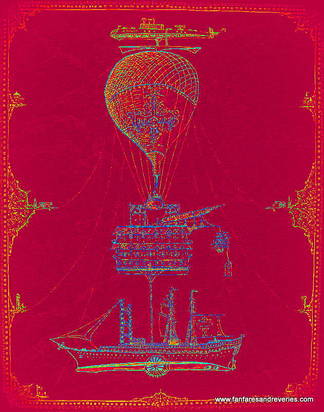 Pen & ink w/watercolor, 11" x 14", G. Tompkins Pen & ink w/watercolor, 11" x 14", G. Tompkins Drama Upon a Volcanic Island After Capt. Nemo introduces himself to the group, the island dwellers are invited to the hidden grotto where the Nautilus lies anchored. The interior scenes of the Nautilus exhibit great set design and tremendous attention to artistic detail. In this scene aboard the mysterious craft Capt. Nemo wears a green velvet jacket and an elegant white shirt while he pours drinks for everyone and discusses his vision for world peace. Wax candles add a bit of ivory splendor to the overall burgundy and gold color scheme, and the wide portholes exhibit circular windows of ethereal blue looking out toward the rugged walls of the grotto. Nemo states unequivocally, "What I did was in the name of peace," in an attempt to justify his method of destroying warships and navies across the oceans of the world. Capt. Harding disagrees that these actions were justified, and there is some tension as the group listens to Nemo broaden the foundation of his philosophy, tactics and mission. Nemo relates that he has been engaging in "experiments in horticultural physics" in an attempt to gain "an inexhaustible food supply." He wants "to conquer famine and economic competition," in a quest to destroy the causes of war. Nemo further explains that he set the explosive charge which sent the pirate ship to the bottom off the coast of the island. He plans to re-float the ship by patching the damaged hull and pumping air into the submerged vessel. He asks Capt. Harding if he's "ready to dance with the devil" by providing the manpower to re-float the ship. The group begins to understand Nemo's scheme and agrees to provide the intense labor needed to complete the project. Racing Against Time & an Active Volcano The island dwellers cut bamboo to make a pipeline for Nemo's salvage plans, using the liquid from rubber trees to act as sealant for patching material. It is a laborious process but the team seems to be making good progress just as some spectacular volcanic explosions take place on the island. One scene features a "weird sunken citadel" which looks like the City of Atlantis, viewed by the divers as they approach the sunken pirate ship. Another scene features a battle with a giant sea creature known as a "Cephalopod" or "Chambered Nautiloid," subdued only when zapped by Nemo's fantastic underwater electric gun. When the volcanic explosions take place and seem to accelerate in ferocity, Nemo announces that their time is up and the island is doomed. In a depressed state, the island dwellers take shelter in the relative safety of the cabin of the Nautilus, but Lady Mary bluntly implores the group, "Is this the infinitely resourceful genius you told me about?" Nemo glumly responds, "Nothing can be done," preferring only to play the pipe organ and wait for the inevitable end. When the group turns to Capt. Harding for a glimmer of hope to escape their present predicament, Nemo despondently replies that Capt. Harding is "a man of faith, not of reason." Just then Capt. Harding describes a possible method of re-floating the sunken pirate vessel by repairing the damaged balloon fabric, then inserting the deflated balloon into the cargo holds of the ship and pumping air into the fabric, re-floating the ship. It is a brilliant idea and Nemo responds, "By heaven, it is a chance!" Flowing Lava and the Final Cataclysm As the pumping operation to re-float the sunken pirate ship begins, flowing lava descends from the active crater of the volcano, destroying everything in its path. Falling rocks pepper the exterior of the Nautilus, even as magnificent light and colors illuminate the hidden grotto and its doomed submarine. A cataclysmic avalanche takes place on the island, with rocks tumbling down the mountainside as trees and topographical features disappear beneath the burning lava. The survivors are successful in their quest to re-float the pirate ship, suddenly witnessing the final fury of volcanic activity as they look toward the spectacular explosions on the island. Neb says that it "looks terrifying," just as the group celebrates their timely deliverance from catastrophic destruction. The survivors mourn the loss of Capt. Nemo who is caught in the grotto amidst the final avalanche and suffers an accidental death aboard the Nautilus. The underwater city collapses off the shore of the island, leaving only rubble in place of what once was a remarkable civilization. As the group sails away on their resurrected sailing ship, Capt. Harding narrates the final words of the film in his voice-over, relating that the survivors "pledged to work for a peaceful and bountiful world," ever mindful of the imagination, work and sacrifice of Capt. Nemo. 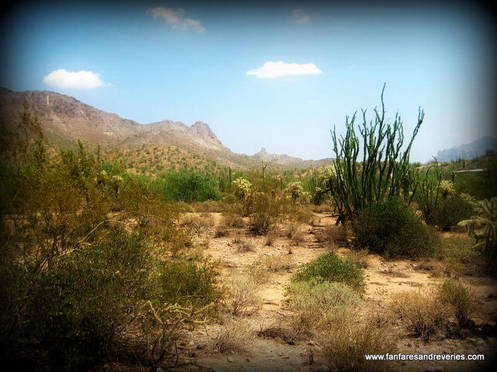 The Arizona Desert often resembles an exotic scene portrayed in Mysterious Island. The Arizona Desert often resembles an exotic scene portrayed in Mysterious Island. Island Caves & A Giant Bird The island survivors battle a giant bird (a prehistoric phororhacos), providing a thrilling moment when Herbert (Michael Callan) heroically jumps upon the large creature and subdues it, rescuing Elena (Beth Rogan), Lady Mary (Joan Greenwood), and Mr. Spilitt (Gary Merrill). Ray Harryhausen's special effects are superlative in this sequence, all orchestrated to coincide with the masterful score by composer Bernard Herrmann. Herrmann found an organ fugue written by composer J. L. Krebs and utilizes this thematic material to underscore the drama of contending with an otherworldly creature in such a marvelously tropical, fantastic environment. After winning the furious battle, the survivors speculate, "I wonder how many minutes it would take to cook in a slow oven?" The group manages to make a meal out of the bird and enjoys a fabulous repast in the relative safety and comfort of their lofty cave-home. Neb (Dan Jackson) humorously suggests that if it had not been for Herbert's heroic action, "Mr. Spilitt would have been in the inside cutting out instead of on the outside cutting in!" A Hidden Cove & the Nautilus After Herbert and Elena narrowly escape becoming permanently trapped in a giant beehive with enormous bees, they both fall through the upper reaches of a cavern and manage to discover a hidden grotto beneath. Here they both spot the strangely beautiful and mysterious submarine "Nautilus," the legendary craft commanded by Capt. Nemo. This is a highly evocative scene with neat atmosphere and very colorful set design. Ray Harryhausen reveals in his accompanying film documentary that the beautiful model of the Nautilus was actually about 8 to 10 feet long, just as impressive as the model featured by Disney for "20,000 Leagues Under the Sea" released in 1954. As Herbert and Elena gingerly inspect the abandoned Nautilus, Elena worries that they will be discovered and urges Herbert to curtail his curiosity. Before they leave, we catch a glimpse of the rich interior of the Nautilus, the gold and burgundy color scheme contrasted with subdued portions of blue-gray, marvelous circular portholes, lovely draperies, a library of scholarly books, maps, candles, and an imposing pipe organ at the end of the room. This is one of the most beautiful sets I have ever seen in a Science Fiction/ Fantasy film. Pirates and the First Appearance of Capt. Nemo (Herbert Lom) When a sailing ship appears just off shore, some of the island survivors instinctively wish to signal their presence upon the island, but Capt. Harding (Michael Craig) wisely orders no signal to be given until they can determine what type of vessel this may be. Through the use of a telescope, Capt. Harding observes the skull & crossbones, revealing this ship to be commanded by a group of pirates. The survivors try to hide all indications of their presence on the island, but the pirates come ashore and accidentally discover signs of recent human activity. Lady Mary trips while bringing a rifle to Capt. Harding, sending a loud report from the lofty cave high above the sandy beach. Immediately a battle begins as the survivors defend their island against the approaching menace. The pirate crew notices the location of the cave and begins to blast away at "The Granite House" with volleys of cannon fire, seriously damaging the structure of the cave. Just as the pirates seem to be winning and enjoying a victory celebration, a huge explosion takes place under the water adjacent to the pirate ship, causing the vessel to sink in just a few minutes with the loss of all hands aboard. Although the island survivors are glad to see the pirates defeated, they are baffled as to the cause of their sudden demise. It is at this point that Capt. Nemo makes his first appearance to Herbert on the beach, emerging from the ocean in his unique underwater gear, looking like some otherworldly apparition unbeknownst to man. Herbert wisely tells Elena to flee as he alone faces this very strange sight. Capt. Nemo commands Herbert to "Put that down!", noting the small knife which the soldier bravely brandishes in his defense. "Very well, keep it if it gives you some comfort," relates Nemo in his marvelous accent and smoothly resonant tone of voice. The other island survivors appear and stand alongside Herbert, curious as to who this unusual apparition might be. Nemo introduces himself and knows each one of the islanders by name, speaking to Lady Mary, "I'm not quite the ogre I appear." Suddenly everything is made clear as the islanders realize that Capt. Nemo was on the island all along, secretly monitoring them and even helping when they faced numerous challenges. Nemo explains that, "Contact with my own species has always disappointed me. Solitude gives me freedom of mind and independence of action." 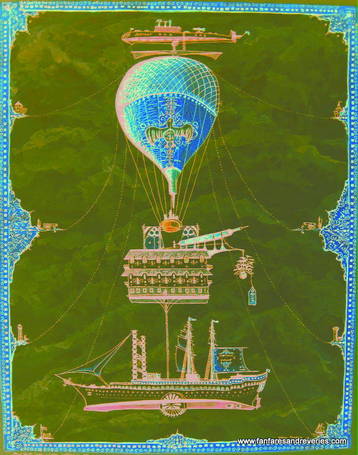 Pen & ink w/watercolor, 11" x 14", G. Tompkins Pen & ink w/watercolor, 11" x 14", G. Tompkins Further Drama, Adventure & Scenes As the island dwellers climb to the top of a steep and active volcano, they observe a small boat just off shore far in the distance. Clambering back to the sandy beach in hopes of making contact, the group discovers two surviving ladies and one dead seaman washed ashore. Bernard Herrmann's music is tender and compassionate at the discovery of these two lone survivors of an apparent shipwreck off shore. Herrmann once described a film's soundtrack music as "the connecting link between celluloid and audience, reaching out and enveloping all into one single experience." Mysterious Island features one of Herrmann's best scores, also available separately via a Tribute Film Classics CD with William Stromberg conducting the Moscow Symphony Orchestra. The score restoration is by John Morgan, Anna Bonn, and William Stromberg, available from screenarchives.com. The music is fabulous, with wide range high fidelity sound and tremendous scope and symphonic power. In 1975 the Decca Record Company issued a classic LP entitled "The Mysterious Film World of Bernard Herrmann," featuring Herrmann conducting the National Philharmonic Orchestra on a London Phase 4 Stereo disc, recorded at Kingsway Hall in London. Besides several selections from "Mysterious Island," this LP also includes music from Herrmann's scores for "Jason & The Argonauts" and "The Three Worlds of Gulliver." Interesting Characters & Fascinating Dimensions Actress Joan Greenwood (1921-1987) plays Lady Mary Fairchild with her regal accent and noble bearing. Born in Chelsea, Joan Greenwood studied at the Royal Academy of Dramatic Art and appeared in films such as "Kind Hearts & Coronets" (1949) and "The Importance of Being Earnest" (1952). She enjoyed a stage career appearing with Donald Wolfit's theatre company in the years following WWII. In her role as Lady Mary in "Mysterious Island," Ms. Greenwood is simply sensational, adding dramatic delight and superlative character to her portrayal of a shipwrecked survivor now stranded upon an uncharted but enchanted island in the Pacific. After the two surviving ladies are discovered on the beach, Herbert relates to Lady Mary that "We came by balloon," to which she immediately responds, "I beg your pardon....Please don't talk nonsense!" Obviously it is an incredible claim by the escaped prisoner of war, but Capt. Harding assures Lady Mary that it is indeed a true if somewhat incredulous story of their flight via a hot air balloon over the Pacific waters. Both Lady Mary and her niece Elena Fairchild (played by actress Beth Rogan) add beauty and grace to this tropical paradise amidst a splendid series of fantastic adventures. Details Along the Journey The film continues with brief portraits of forests and woods. Several scenes feature a sensational portrait of caves which Capt. Harding climbs via long lengths of hanging vines in order to inspect the interior. As the Captain enters the caves high above the sandy beach, Bernard Herrmann's music again helps to fashion the atmosphere and drama of the scenes inside the cave. The Captain finds a letter dated 1862 from a dusty diary hidden within the confines of the secretive cave. After determining that the cave would make a suitable home for the island survivors, Capt. Harding orders the rest of the crew to ascend the vines in order to fully inspect the entirety of the cave's interior. In the film's narrative voice-over, the Captain relates that their newly found home was christened "The Granite House," now accessible via a homemade elevator, adding that, "We lived like primitive men." As the group becomes comfortable in their lofty aerie, the conversation between Mr. Spilitt and Lady Mary enters a delightful phase as Mr. Spilitt turns toward the elegant Lady, eloquently stating the observation that, "At the moment my main comfort is your presence." Mr. Spilitt pretends to use opera glasses as he takes a momentary break from shaving in this inventive, imaginative and thoroughly captivating scene. 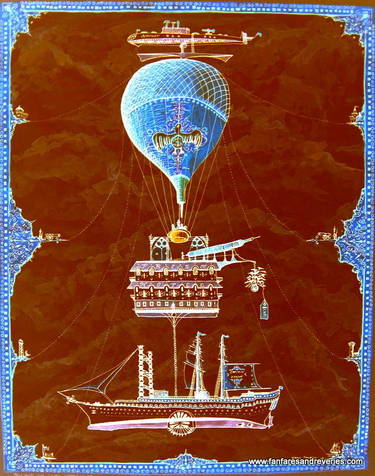 Pen & ink w/watercolor, 11" x 14", G. Tompkins Pen & ink w/watercolor, 11" x 14", G. Tompkins Dramatic Events & Exotic Atmosphere During the storm sequence over the Pacific Ocean, the rapidly descending balloon is pushed further westward toward an unknown island. We catch a brief glimpse of some rocks in the distance as one of the crew announces the sound of waves crashing against the shore. The group remains in a precarious position above the churning waters below, as rain continues to lash the balloon amid furious winds and the threat of impending disaster. Capt. Harding falls from the rigging and hits the water, followed by Herbert and then Mr. Spilitt who says he will swim all the way to shore. Neb and Sgt. Pencroft are the only two left holding onto the balloon's rigging as they are finally dragged up onto the sandy beach. The following scene opens upon a magnificent beach as the survivors begin to search for Capt. Harding. The matte painting is sensational in this beautiful portrait of a tropical island, with fluttering seagulls waving about and huge volcanic mountains in the distance. The atmospheric flavor breathes with incredible color, splendid detail and verdant tropical majesty. Full credit for the masterfully created scenes in this film would have to include William C. Andrews (Art Direction), Francisco Prosper (Construction Coordinator, Art Department, uncredited), Ray Harryhausen (Creator of Visual Effects), Vic Margutti (Special Photographic Effects, uncredited), Wilkie Cooper (Cinematography), Cy Endfield (Director), Charles H. Schneer (Producer), and Bernard Herrmann (Music, with the London Symphony Orchestra). Making a Home on the Island & Exploration of the Landscape In order to restore stamina for the crew after finding Capt. Harding, Mr. Spilitt cooks up a batch of giant oyster stew "seasoned with seaweed." There is some speculation amongst the survivors as to their exact location, perhaps Figi or New Zealand. Capt. Harding narrates the evolving story via his detailed observations delivered through the accompanying voice-over. "The landscape everywhere was a mixture of the strange and the beautiful." Volcanoes stand surrounded by tropical palm trees and sandy beaches, all of it "a riot of wonderful hues and fantastic colors." The Captain relates that there is "no evidence that man had ever set foot here before." Towards an exploration of the interior of the island, a stream and a magnificent waterfall appear in the midst of a lush tropical forest, again the results of spectacular matte painting. The survivors manage to battle a giant crab and win the fight when the creature falls into a hot geyser along the beach. We catch glimpses of a realistic volcano in the distance, which Capt. Harding orders the crew to scale in order to better observe their present location. In managing to climb to the summit of the volcano, Mr. Spilitt finds a pleasant surprise. "Giant mice!" he exclaims upon finding a herd of wild goats, all of which are dutifully pressed into service. Looking into the mouth of the volcano, one can perfectly visualize both the splendor and the terror of this genuinely awe-inspiring phenomenon. 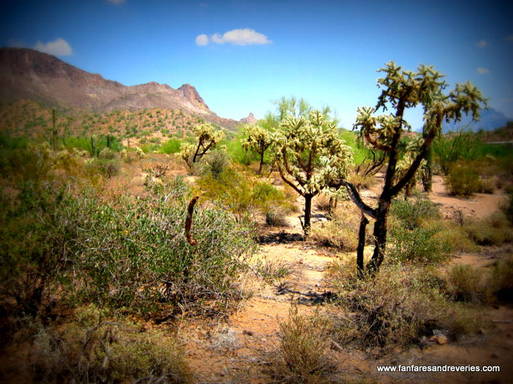 Arizona often imitates an exotic scene from Mysterious Island. Arizona often imitates an exotic scene from Mysterious Island. A Memorable Fantasy Film in the Science Fiction Genre Cy Endfield directed "Mysterious Island" with a screenplay written by John Prebble, Daniel Ullman and Crane Wilbur, loosely based upon the original novel by French author Jules Verne (1828-1905). The cast is comprised of Michael Craig as Capt. Cyrus Harding, Joan Greenwood as Lady Mary Fairchild, Michael Callan as Herbert Brown, Gary Merrill as Gideon Spilitt, Herbert Lom as Capt. Nemo, Beth Rogan as Elena Fairchild, Percy Herbert as Sgt. Pencroft, and Dan Jackson as Cpl. Neb Nugent. The film was produced by Charles H. Schneer, featuring a grand music score by Bernard Herrmann (recorded with the London Symphony Orchestra), cinematography by Wilkie Cooper, Art Direction by Bill Andrews, and sensational visual effects created by Ray Harryhausen. Opening Credits and Following Scenes The film opens with the powerful orchestral music of Bernard Herrmann, utilizing a very large orchestra incorporating 8 horns, 4 tubas and an expanded wind and percussion section. We are swept up into enormous waves of imagination as we encounter Herrmann's vivid and spectacular score. Although Ray Harryhausen has stated that his original idea was to showcase a prehistoric concept, he indicates in the accompanying documentary that this plan was altered in order to highlight the plight of survivors on a marooned island in the Pacific, a vehicle for introducing giant creatures via the "Super Dynamation" process. The film opens with a scene from the American Civil War as Federal and Confederate armies face one another during the Siege of Richmond, Virginia in 1865. As a storm rages outside of a Confederate prison, Federal prisoners make plans to escape, hoping to capture an observation balloon despite an armed guard and the furious windstorm aloft. The masterful set design gives a very atmospheric feel to the interior of the prison and the outer courtyard where the balloon is secured in the midst of buffeting winds and heavy rainfall. Through a clever execution of events, the Federal prisoners make their daring escape and manage to take the balloon aloft, narrowly missing a few rifle shots from the Confederate guards as well as avoiding a sharp steeple almost directly in their appointed path of ascent. The Journey Aloft Although Capt. Harding's plan of escape is successful, the group of escapees now includes a Confederate soldier (Sgt. Pencroft) who valiantly attempts but fails to halt the stealing of the balloon. Now there are five passengers in the wicker basket beneath the balloon, including Capt. Harding, Pvt. Herbert Brown, newspaper correspondent Gideon Spilitt, Cpl. Neb Nugent and the aforementioned Sgt. Pencroft (an unwilling participant in the grand escape). As furious winds carry the balloon further and further aloft, Capt. Harding narrates the story via a descriptive voice-over, indicating they are now "prisoners of the wind" in the greatest storm in American history. The group witnesses "forests torn up by their roots," and begins to feel "helpless in the storm's mighty grip." Capt. Harding intuitively speculates internally about ever setting foot on earth again. Music, Storms & Atmosphere When someone notices a large body of water below, the group decides to lower the balloon's altitude in order to investigate their exact location. After days of travel initiated by incredible winds, it is thought that they may now be over the Pacific Ocean. As the descent proves to be too fast (due to a stuck release valve), Capt. Harding heroically climbs up the craft's rigging to try to stem the rapid fall but manages only to break the valve. The group is now stuck in mid-air, unable to descend or ascend, frozen at a specific height above the ocean waters below. A storm appears, forcing the crippled vessel to be carried westward in the furious current of the moment, lashed by wind-gusts and torrential patterns of rain. The balloon tears open causing a rapid descent toward the angry waters swirling beneath the imperiled craft. Capt. Harding orders everything of weight to be thrown out, guns, food, ammunition, all in order to reduce heaviness. Everyone must climb the rigging to get closer to the balloon in hopes of jettisoning the wicker basket as a further measure of weight reduction. It is a precarious moment and Herbert hesitates as he looks down upon the violently churning sea far below. Capt. Harding orders Herbert to make a snap decision, "You climb or you drown!" This scene features a magnificent portrait of the sea and the ruptured balloon as the basket is cut loose and falls to earth below. The music of Bernard Herrmann adds immensely to the overall excitement, flavor and atmosphere of the special effects introduced by Ray Harryhausen and the artists involved in this thrilling fantasy film. 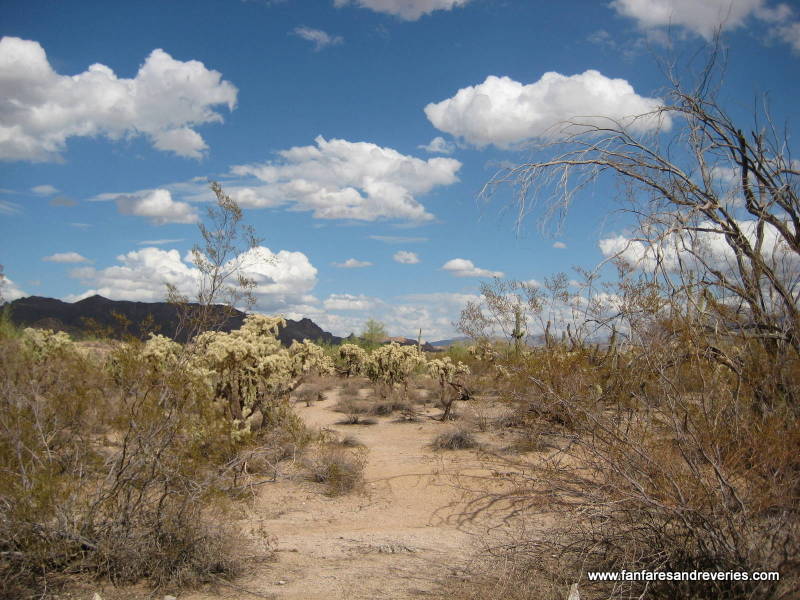
There are windswept days in the Arizona Desert where seemingly every color of the spectrum may be examined upon close inspection. This particular area is just north of McKellips Road and Crismon Road in East Mesa, an area where Usery Mountain Regional Park stands adjacent to Tonto National Forest. After a period of seasonal rain, it is amazing to see how green this area becomes, bursting with lime-green, yellow-green, emerald green and dozens of other varieties of spectacular hues. When the desert is dry, one notices the rust-colors, the tans, the yellow ochres, the bleached greys, faded green hues and ashen rocks. The wildlife also exhibits great variety of color, from flashy iridescent hummingbirds to motley colored songbirds and rustic desert quail. Once I visited a Park nearby and witnessed Harris hawks sailing high overhead, looking like noble black falcons on a cerulean blue sky. I am reminded of a phrase coined by American artist Wolf Kahn, a gifted painter and fantastic landscape artist. Kahn once told a group of Drew University art students that he was intrigued by "the tangles of nature," those outdoor spectacles we notice when we truly study and observe the natural environment which surrounds us. The Arizona Desert is indeed such an environment, filled with tangles and colorful spectacles stretching from the desert floor all the way to the blue-grey, purple and lavender mountain peaks.
|
Author
|
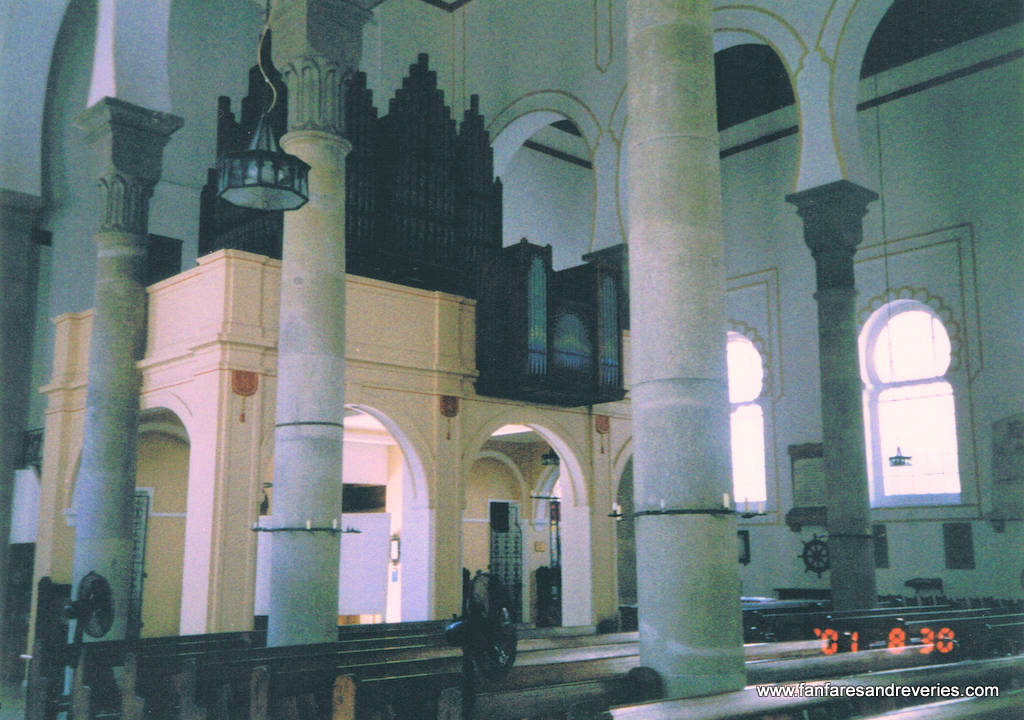
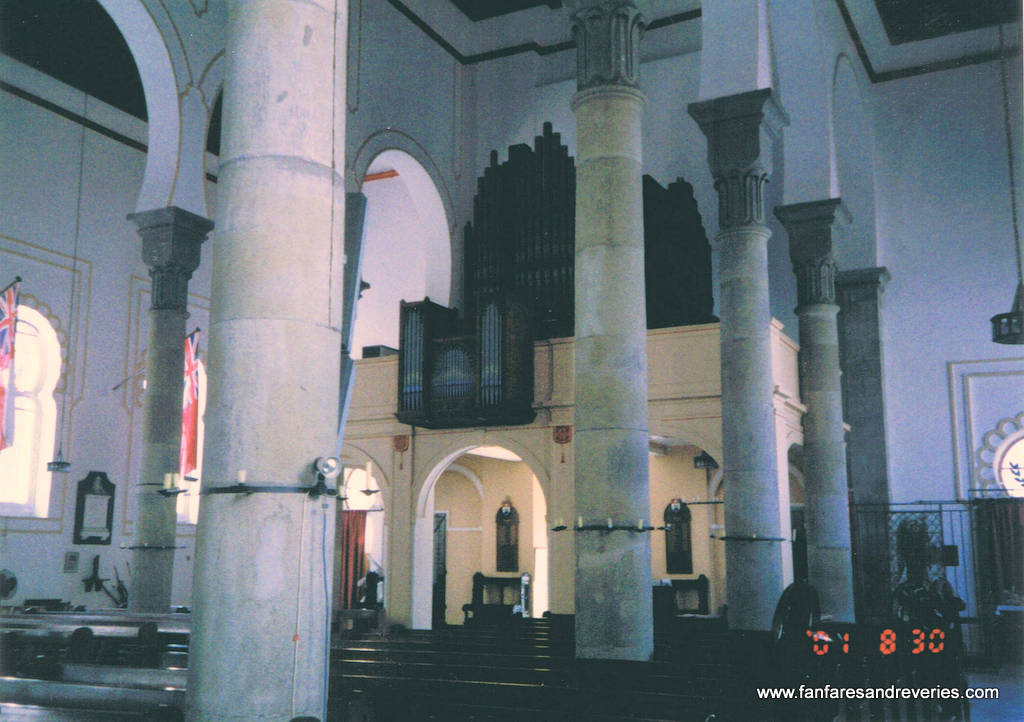
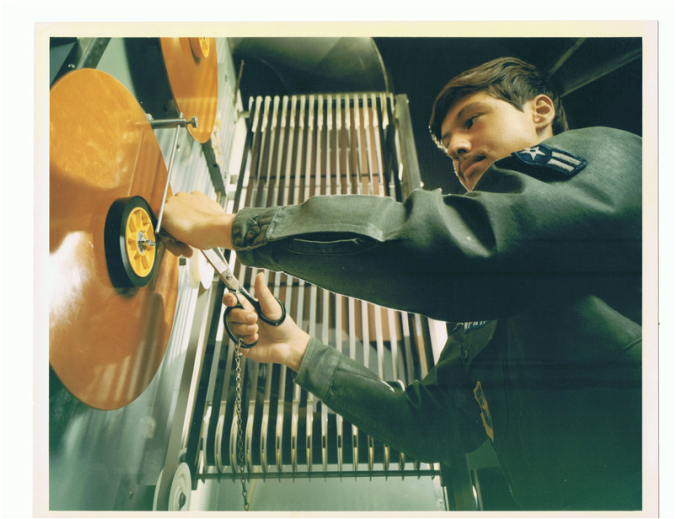
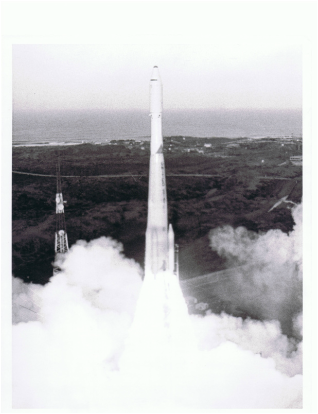
 RSS Feed
RSS Feed